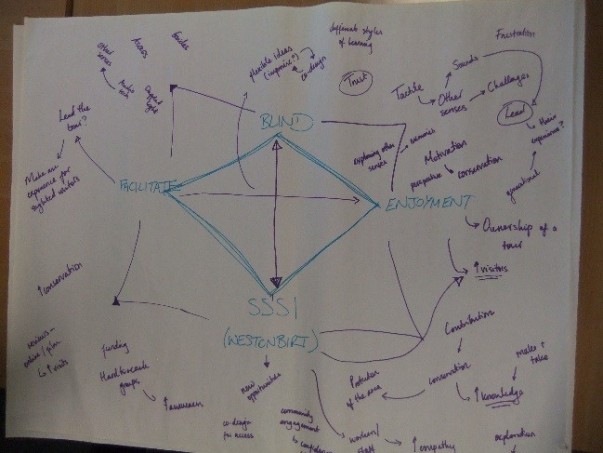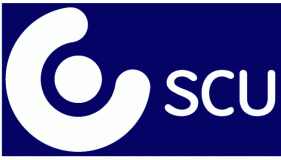Blog Archives
Never say never again…
After my PhD viva in 2004, I promised myself I’d never again study for a qualification. Having gone straight from A-levels through a degree to a doctorate, I felt as if I just couldn’t learn anything more. But a decade later, I found myself at a career crossroads trying to figure out what to do at the end of my maternity leave.
Inspired by my elder daughter’s curiosity, I set up a blog, Simple Scimum, to answer questions about science and nature. Slowly, as the blog gathered followers, my confidence grew; and when one of my daughter’s friends asked if I would answer her science questions too, I knew I had to turn science writing into something more than a hobby.
I began searching for jobs that involved writing about science and quickly realised that a qualification in science communication would be an advantage. So, I googled ‘sci comm Bristol’ and found UWE’s MSc in Science Communication, which sounded brilliant but was more than I could manage whilst working part-time and looking after two young children. However, the Postgraduate Certificate in Practical Science Communication was exactly what I was looking for: a one-year, part-time course with intensive teaching blocks, offering hands-on experience and links to industry. I applied for the September 2016 intake and won a bursary towards my tuition fees: I was going back to university!
I felt nervous about returning to study after such a long break but I knew that this was just the first step along a new career path.
The ‘Writing Science’ module was an obvious choice, with the opportunity to create a magazine and develop a portfolio just too good to miss. I learned the essential elements of journalistic practice and wrote a bylined article for UWE’s Science Matters magazine. But the real highlight was a three-hour workshop on ‘how to write a book’ – I’d love to write science storybooks for children, and came away bursting with ideas, enthusiasm and an action-plan to turn my dream into reality. (Roll on NaNoWriMo…!)
But it was through the ‘Science in Public Spaces’ module that I discovered just how strongly I want to inspire young children and engage them with research. I designed ‘Simon’s Box’ to talk about genetic disease and genome editing with GCSE pupils in local schools. And I had the best time in the Explorer Dome learning about science shows for young audiences. Seeing how to encourage children to learn through stories and play was a fantastic experience and a seminal moment in my desire to become a science communicator.
At times I found it hard to juggle study, work and childcare but the intensive teaching blocks made it easier for me to attend lectures and workshops. I paid for my younger daughter to go to nursery for an extra morning each week and used that time for reading and research. Still, I often found myself studying between 8pm and 10pm, when the kids were tucked up in bed, and I was grateful for 24-hour online access to UWE’s library facilities. But now the hard work is over and I’m just waiting for my final results.
Over the past year, I’ve been part of a supportive cohort of students who are committed to science communication. I’ve developed the confidence to pursue a new career path and given up my old job to become a Research Fellow in UWE’s Science Communication Unit. Before the PGCert, I dreamed of working in science communication but now I’m actually doing it.
Kate Turton
Postgraduate Science Communication students get stuck in on ‘Science in Public Spaces’
Emma Weitkamp & Erik Stengler
September saw the lecturing staff at the Science Communication Unit welcoming our new MSc Science Communication and PgCert Practical Science Communication students to UWE and Bristol. It also sees the start of our refreshed programme offering, which includes significant changes and updates to two of our optional modules: Science in Public Spaces and Science on Air and On Screen.
The first three-day block of Science in Public Spaces (SiPS) marks the start of a diverse syllabus that seeks to draw together themes around face-to-face communication, whether that takes place in a what we might think of as traditional science communication spaces: museums, science centres and festivals or less conventional spaces, such as science comedy, theatre or guided trails. Teaching is pretty intense, so from Thursday, 29th September to Saturday, 1st October, students got stuck into topics ranging from the role of experiments and gadgets to inclusion and diversity.
Practical science fair
Thursday, 29th September saw the 13 SiPS students matched with researchers from the Faculty of Health and Applied Sciences. Students were introduced to cutting edge research and have been challenged to think about how this could be communicated to the public in a science fair setting. Each student will work with their researcher to create a hands-on activity which they will have the opportunity to deliver to the public at a science fair to be held during a University Open Day in the spring.
Towards the end of the three days a session on creativity generated intense discussion about how we might judge what creativity is through to practical techniques and tips we might use to stimulate creative thinking. The session included a word diamond (McFadzean, 2000), where groups considered how you might foster engagement and enjoyment amongst blind visitors to the Grand Canyon, how blind visitors could be involved in creating a sensory trail (for sighted people) at an arboretum or how to enable a local community to be involved in decision making around land use that involved ecosystem services trade-offs. Challenging topics that draw on learning from earlier in the week.

After a final session on connecting with audiences, students (and staff) were looking a little tired; three days of lectures, seminars and workshops is exhausting. We hope students left feeling challenged, excited and ready to start exploring this new world of science communication and public engagement and that they find ways to connect their studies with events and activities they enjoy in their leisure time – though that might not apply to the seminar reading!
Science in Public Spaces got off to an excellent start, thanks to the students for their engaged and thoughtful contributions in class. Up next is the Writing Science module, where Andy Ridgway, Emma Weitkamp and a host of visiting specialists will be introducing students to a wide range of journalistic techniques and theories. Then it will be the turn of the new Science on Air and on Screen where Malcolm Love will introduce students to techniques for broadcasting science whether on radio, TV or through the range of digital platforms now open to science communicators. Looks to be an exciting year!
McFadzean, E. (2000) Techniques to enhance creativity. Team Performance Management: An International Journal, 6 (3/4) pp. 62 – 72









